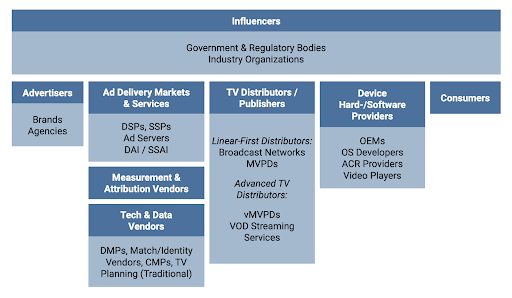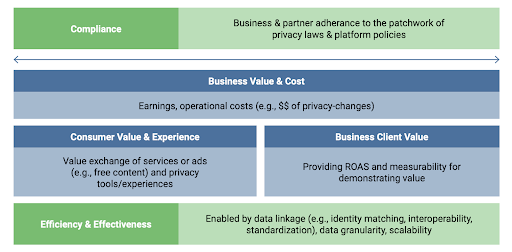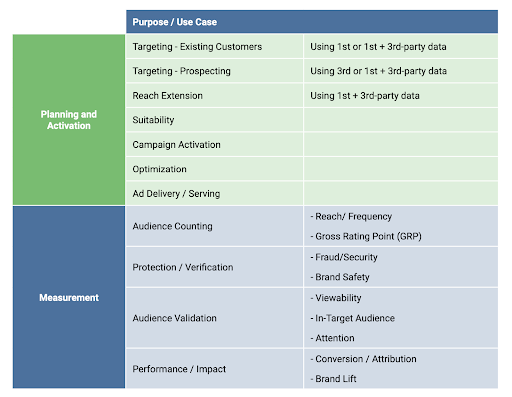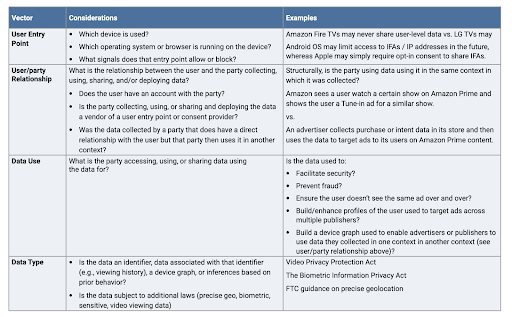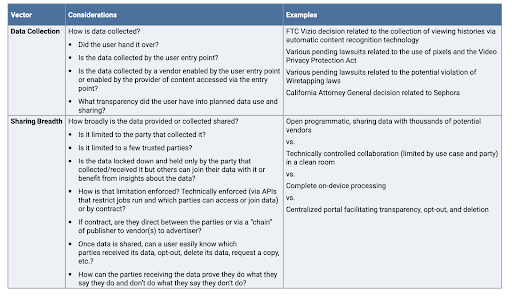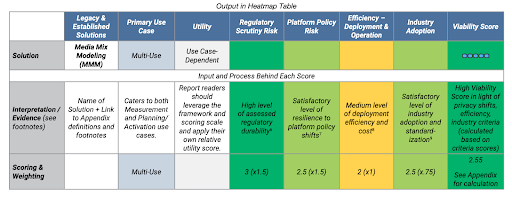
A new CIMM + 4As report offers a methodological approach for assessing privacy liabilities, as well as established and emerging solutions to help TV advertisers launch privacy-compliant campaigns.
CTV advertising will top $30 billion in 2024, a 22% increase over 2023. Clearly, advertisers are leaning into TV advertising, but they’ll face significant implications in terms of privacy.
To help marketers navigate the privacy landscape, the Coalition for Innovative Media Measurement (CIMM) and the 4As released a comprehensive report, Privacy and the Future of TV Advertising, to
- Offers a structured approach to understanding partner and technology solutions and their underlying data sets within a complex, ever-changing landscape – a fundamental step to navigating privacy-forward practices.
- Proposes four frameworks that break down the complexity of privacy in the advertising industry by detailing stakeholders, use cases, privacy themes, and established and emerging solutions and technologies.
- Provides a Solutions Heatmap that assesses the privacy risks and relative efficiency and industry adoption across many types of solutions (weighted to provide Overall Viability Scores)
Let’s look at some of the highlights of each framework.
Stakeholder & Use Case Framework
The report identifies multiple stakeholders who are responsible for data-related functions that support advertising, from data access, collection, preparation (aggregating and packaging data for use by other ecosystem players), and deployment.
Each stakeholder needs to understand their structural position in the ecosystem as this has implications for adhering to privacy regulations and policies. They suggest leveraging this framework and considering:
- Do you have a direct relationship with a user/ consumer?
- Are you dependent on an upstream party to access and deploy user data?
- Are you dependent on an upstream party to communicate with a user and to provide transparency into their data collection, use, and sharing practices?
- Are you reliant on sharing data with multiple parties to power their business needs?
Common themes were shared among all the stakeholders:
The use cases define the critical planning, activation, and measurement use cases where TV advertising may rely on consumer data, and fall into two broad categories: Planning and Activation, and Measurement.
Privacy Framework
The Privacy framework is designed to enable a stakeholder to analyze the durability of a solution for a use case by running each potential solution for each applicable use case by the stakeholder through several vectors.
The Privacy framework helps marketers determine whether, among other things, the data is personal or not, and the requirements and impacts on data collection, usage, and sharing for that specific use case, including user transparency and choice.
Solutions Framework
This framework provides a guide for identifying the solutions the marketer’s business uses for TV planning, activation, and measurement. Core solutions and techniques are defined and classified as existing, emerging, or enabling to reflect the level of industry adoption or enablement.
The Solutions framework is quite in-depth, and can be used to:
-
- Map which solutions your business employs for each critical use case
- Identify which dimensions your business needs to consider when evaluating the impact of platform policies and privacy compliance and any utility tradeoff
- Explore alternative solutions for implementing critical use cases, if needed.
The report provides a thumbnail of existing and emerging privacy solutions, technologies, and techniques, as well as criteria for evaluating solutions.
Solutions Heatmap
After carefully considering the findings and reviewing the assessments, the report recommends that you can determine your business’s risk tolerance by using the heat maps in the report to guide your business initiatives and investments.
The solutions heatmap is a tool for evaluating solutions across utility, privacy durability, efficiency, and adoption. These dimensions can then be combined to create a unified “Viability Score” metric for weighing the privacy-utility tradeoff and industry considerations for each solution used.
It’s a rather involved process that’s well worth the time to work through. Here’s an example of a heatmap:
Final Advice
While this report serves as a valuable starting point, readers also have the option to collaborate with experts who can guide them in crafting a personalized privacy-focused strategy. By placing privacy at the forefront of planning, execution, and evaluation processes, brands can proactively address any potential disruptions with the assurance that they are both benefiting their business and enhancing the experience for customers.

